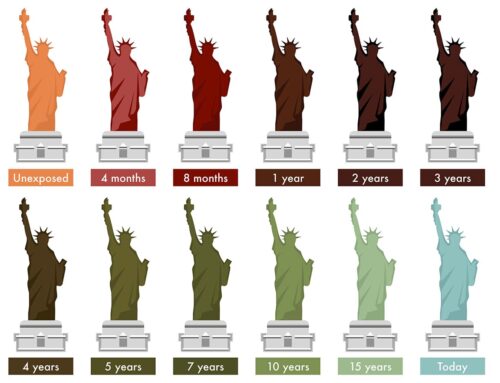When electronic assemblies are inspected with the aid of an AOI-system (Automated Optical Inspection), it sometimes happens that products are rejected based on deviating colour or degree of gloss. Often the bare board supplier gets the blame or there is doubt about the reliability of the programming of the AOI.
It would be better however to wonder what is really going on and how these deviations could occur. In this article I will try to shed some light on this matter from different angles.
First, we have a look at some IPC documents that relate to solder masks, IPC-SM-840 and IPC-HDBK-840. IPC-SM-840 is the document for the qualification of the solder mask material, on one hand by the supplier of the material, as well as by the PCB supplier in its process. IPC-HDBK-840 is a handbook with in-depth background information on solder masks.

Paragraph 3.2.4 of the IPC-SM-840 indicates that the colour of the cured solder mask must comply with the colour as qualified by the supplier of the solder mask material. Paragraph 3.3.3 discusses discoloration and says about this that a discoloration caused by the soldering processes is not a reason for rejection. Furthermore, it is also stated that a certain degree of discoloration might be agreed upon with a customer.
I have been asked the question in this context if it wouldn’t be useful to specify a RAL colour. In theory this might be possible, however each supplier has its standard colours. If he has to deliver according to RAL, this would mean a custom-made material, and the costs would rise to a very high level.
The IPC handbook, IPC-HDBK-840 indicates regarding colour that different colours exist, but in general green is the most chosen colour. This document however gives a bit more information about the gloss of solder mask, further information that can’t be found in IPC-SM-840.
In summary, the handbook describes that the degree of gloss (and the surface roughness by the way) might influence the inspection with the aid of an AOI. And that the proper adhesion of a conformal coating layer can be influenced by this. For this reason, matte solder masks are commonly used. A general, simple test method for the degree of gloss is also discussed. Explicitly the handbook indicates that no general standard exists on how the degree of glossiness is indicated and that each supplier does so at its own discretion.
Speaking with suppliers of solder mask materials, they are clear in their statements. They say that they produce their products within a small margin regarding colour and degree of gloss, as this is integrated in their qualification process. They also state that for instance temperature and humidity levels during processing will have an influence on the final result.
 Peters Lackwerke also indicates that some of the solder masks in their portfolio can be ordered in different variations. For instance, their Elpemer SD 2467 is available in grass-green-transparent, silk-glossy (SG-GG), yellow-green-transparent, silk-mat (SM-YG) and dark-green-transparent, silk-glossy (SG-DG). The difference in visual appearance is clearly visible in the picture. Thus, depending on the type used by a bare board supplier, it might be that, even though one would expect every printed board with an Elpemer SD 2467 solder mask would look similar, major differences can occur.
Peters Lackwerke also indicates that some of the solder masks in their portfolio can be ordered in different variations. For instance, their Elpemer SD 2467 is available in grass-green-transparent, silk-glossy (SG-GG), yellow-green-transparent, silk-mat (SM-YG) and dark-green-transparent, silk-glossy (SG-DG). The difference in visual appearance is clearly visible in the picture. Thus, depending on the type used by a bare board supplier, it might be that, even though one would expect every printed board with an Elpemer SD 2467 solder mask would look similar, major differences can occur.
Peters Lackwerke indicates, however, that if 2 board shops process the same type almost no difference should occur. They also state that for an optimum performance of the AOI matte solder masks are preferable.
Conclusion: physical laws cannot be changed; the final colour and gloss of solder masks will depend on process parameters of the solder processes. Human beings can adapt themselves to nuances, AOI installations unfortunately have their limitations. Suppliers of solder mask materials know these problems and try to supply their materials of a consistent quality. If one changes the solder mask type or supplier, major differences might occur, also because there are no unambiguous, general standards in this regard.







